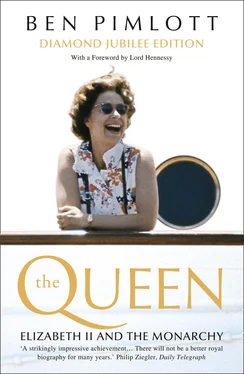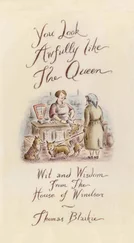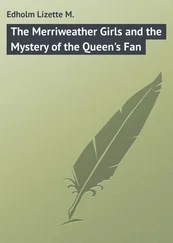Few others looked so far ahead. Most newspaper commentary combined anodyne leading articles about the value and virtues of royalty with sentimental descriptions of the baby’s appearance. Crawfie thought he looked like George V, 43John Dean described him as ‘a tiny red-faced bundle, either hairless or so fair as to appear so’. 44A few days after the birth, Cecil Beaton was called to the Palace to take the first official pictures of mother and baby. ‘Prince Charles, as he is to be named, is an obedient sitter,’ he noted. ‘He interrupted a long, contented sleep to do my bidding and open his blue eyes to stare long and wonderingly into the camera lens, the beginning of a lifetime in the glare of publicity.’ 45As a royal gesture, the Princess instructed that food parcels made up from gifts received at the Palace should be distributed to mothers of all children born on November 14th. 46
The baby Prince was placed in a gilt crib, with lace frills around it, and the entire Palace staff was invited to visit the nursery to take a peek. A royal pram was brought out of storage, along with a royal rattle once used by the Princess. 47According to Crawfie, in order ‘to give him as good a foundation as possible,’ for the first few months the Princess breastfed him. 48Before the Prince had reached the age of two months, however, there was an unfortunate hiatus. In January, it was announced from the Palace that Princess Elizabeth had contracted measles. There were no complications. Nevertheless, it was feared that the baby might catch the infection. It was therefore decided that mother and baby should be separated, until the disease had run its course. 49
IF THE PERIOD following the Wedding was a happy one for the Princess, the immediate aftermath of her first confinement was tense and anxious, as the full gravity of her father’s illness – with its terrible implications, not just for him, but for her as well – was brought home to her. Two days after the birth, the King yielded to the advice of his doctors that a long-projected tour of Australia and New Zealand, similar to the one he and the Queen had undertaken as Duke and Duchess of York in 1927, should be postponed. The decision was a bitter disappointment, but he had no choice – he had been told that such a journey might delay his recovery, and even endanger his leg. 50
The moment was a turning point. From this time on, the Heiress Presumptive and her young, healthy family became the present, as well as the future – her energy and composure linked in the public mind to the visible fatigue of the ailing King. Though still in his early fifties, the King looked and behaved like a man much older, and had become increasingly difficult for his family and advisers to handle. He remained a loving and deeply devoted father, who enjoyed nothing so much as a private family occasion. In matters of state, he was punctilious, honest, and stoical to a fault. But his ability to deal with complicated matters, never great, diminished still further under the impact of his illness. Although, ultimately always willing to take advice, he became increasingly obstinate.
There was also an intensifying of some long-established traits: and in particular his bad temper. ‘He had his explosions,’ says one of his former advisers. ‘He would explode if he read something in the paper that the Prime Minister hadn’t told him about. We used to call them his “gnashes”. When they occurred Princess Margaret was very good at defusing them.’ 51One friend of the princesses, who used to stay at Sandringham and Balmoral, recalls the King’s ‘prep-school sense of humour,’ and rollicking enjoyment of practical jokes. He also remembers his ‘Hanoverian bark’ if something annoyed him. The subject of his displeasure was often politics. However, everyday incidents could also provoke an outburst. Once, when they were shooting at Sandringham, a man walked past and the King said, ‘He didn’t take his bloody hat off.’ 52According to another ex-courtier, the Monarch ‘used to lose his temper with anyone around.’ 53
Some people wondered whether he had a touch of the petit mal . Others put it down to the frustration caused by his own intellectual limitations, and the need to cover up. Alec Vidler, a canon at Windsor who often dined with the Royal Family, found him ‘really very simple,’ and also ‘difficult to get on with because he talked in an excitable manner’. 54Another aide, meeting the King for the first time in 1947, was taken aback by his irascibility and apparent inferiority complex. It was as if, he recorded, the Monarch’s displays of wrath and emphatic manner were devices to hide his ignorance and weakness. 55
In March 1949, the King underwent major spinal surgery to restore circulation to his leg, carried out in a surgical theatre constructed at Buckingham Palace. He was well enough by June to be driven in an open carriage to watch the Ceremony of Trooping the Colour, while his elder daughter rode confidently at the head of the parade. Pictures of him, however, show a drawn, tired old man. He was now a semi-invalid, and the rest of his life was to be a series of alarms, remissions and new alarms, with alternating episodes of relief and anxiety, against the background of an unspoken foreboding. His wife and two daughters admired, adored, and felt protective towards him – as they always had. But as his health deteriorated and his ability to cope diminished, his dogmatism grew, and so did the pressure on those around him. It was heightened by a desperate resistance to the truth. ‘The Queen never allowed you to contemplate the fact of the King’s illness,’ recalls a former aide. 56
The result was a collective self-deceit at Court, which made a realistic look into the future impossible to discuss. The King’s ill-health also had the effect of increasing his elder daughter’s sense of independent responsibility, as she assumed more and more of his functions. Outwardly, the Princess showed no sign of strain. Indeed, she and the Duke – with a male heir promptly provided, and efficiently nurtured by a retinue of helpers – embarked on a brief episode of social gaiety. As pre-war Society began to re-emerge from hibernation, the royal couple were to be seen at the houses and events frequented by others of their kind, or in the company of show business personalities, for whom both princesses had a particular penchant. Ordinary citizens bought photos of their favourite film stars. The King’s daughters invited them to dinner, or to stay. When Princess Elizabeth celebrated her twenty-third birthday in April 1949 at the Café de Paris, a fashionable restaurant in Coventry Street, following a visit to The School for Scandal at the New Theatre, the royal party was joined by Laurence Olivier and Vivien Leigh, the leading actor and actress of the show. Together, the royal and theatrical party ‘tangoed and sambaed, waltzed and quick-stepped’ the night away, before going on to a nightclub for more of the same. 57
For a time, both princesses took up with Danny Kaye, then at the height of his fame. John Dean recalled seeing the American comedian ‘capering round Princess Elizabeth’ on the lawn at Windlesham Moor. 58At grand social occasions, the Princess and the Duke were inevitably the main attraction, and they learned to play their parts. In June 1949, Chips Channon recorded his impression of the couple at a ball at Windsor Castle, mainly attended by the clever, artistic, smart members of the emerging ‘Princess Margaret set’. Elizabeth was wearing a very high tiara and the Garter, and Philip, also with the Garter, was in his naval uniform. ‘They looked like characters out of a fairy tale’, wrote Channon, ‘and quite eclipsed Princess Margaret, who was simply dressed.’ 59This was one kind of fancy dress. There was also another. At a ball given by the American ambassador in July – in a curiously snobbish piece of royal whimsy – the Duke appeared as a waiter, wearing a white apron, and his wife as a maid. 60
Читать дальше












